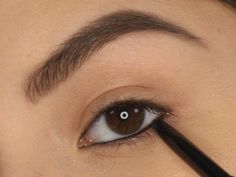Kajal Theory
Kajal, also known as Kohl, holds a significant place in various cultures around the world, especially in South Asia, the Middle East, and North Africa. It’s not just a cosmetic item; it carries a rich history, cultural significance, and even scientific aspects that have intrigued scholars for centuries. In this class note, we will delve into the multifaceted nature of Kajal, exploring its origins, cultural symbolism, ingredients, application techniques, and its evolving role in modern society.

Historical Origins: The history of Kajal traces back thousands of years, with evidence of its usage found in ancient civilizations like Mesopotamia, Egypt, and the Indus Valley. In these ancient cultures, Kajal was not merely a beauty product but held spiritual and medicinal significance. It was believed to ward off the evil eye, protect against infections, and even promote visual acuity. The ingredients used in ancient Kajal formulations often included natural substances like soot, charcoal, ghee, and herbs, reflecting the blending of beauty and medicinal practices of the time.
Cultural Significance: Kajal has deep cultural roots and holds various symbolic meanings across different societies. In South Asian cultures, applying Kajal to infants and children is a common practice believed to protect them from nazar (evil eye) and promote healthy eyesight. Additionally, it is an essential adornment for women, enhancing their beauty and accentuating their eyes, which are often considered the windows to the soul. In Middle Eastern and North African cultures, Kajal holds similar significance, with women using it for beautification and as a symbol of femininity and mystique.

Ingredients and Formulations: Traditionally, Kajal was made from natural ingredients sourced from the environment. Common ingredients included lampblack (carbon black obtained from soot), almond oil, castor oil, and various herbs with medicinal properties. These ingredients were carefully ground and mixed to create a smooth paste, which was then applied to the eyes using a small stick or applicator. However, with modernization and commercialization, synthetic alternatives have become prevalent in the market, raising concerns about safety and authenticity.
Application Techniques: The application of Kajal is an art in itself, with various techniques passed down through generations. Traditionally, a small stick or rod known as a kohl stick was used to apply the Kajal to the waterline of the eyes. The process requires precision and skill to achieve the desired look without causing discomfort or irritation to the eyes. Additionally, some cultures incorporate intricate designs and patterns using Kajal, further enhancing its decorative and aesthetic appeal.
Scientific Perspectives: Beyond its cultural and historical significance, Kajal has attracted attention from scientists and researchers due to its potential medicinal properties and impact on eye health. Studies have shown that certain natural ingredients used in Kajal formulations possess antimicrobial and anti-inflammatory properties, which may help protect against eye infections and promote overall eye health. However, the safety of synthetic additives and heavy metals found in some commercial Kajal products remains a concern, highlighting the need for stringent quality control measures.

Modern Trends and Challenges: In recent years, Kajal has undergone a transformation, adapting to modern beauty standards and consumer preferences. With the rise of social media and beauty influencers, Kajal has gained popularity not only in its traditional form but also in innovative variations such as waterproof formulas, smudge-proof pencils, and long-lasting gels. However, this modernization has also led to challenges such as cultural appropriation, as Kajal becomes commercialized and divorced from its cultural and historical roots.
Conclusion: In conclusion, Kajal represents more than just a cosmetic product; it embodies a rich tapestry of culture, tradition, and science. From its ancient origins to its modern adaptations, Kajal continues to captivate and inspire people around the world, serving as a symbol of beauty, tradition, and identity. As we continue to explore and celebrate the legacy of Kajal, it is essential to preserve its cultural heritage while embracing innovation and scientific advancements for the benefit of future generations.


